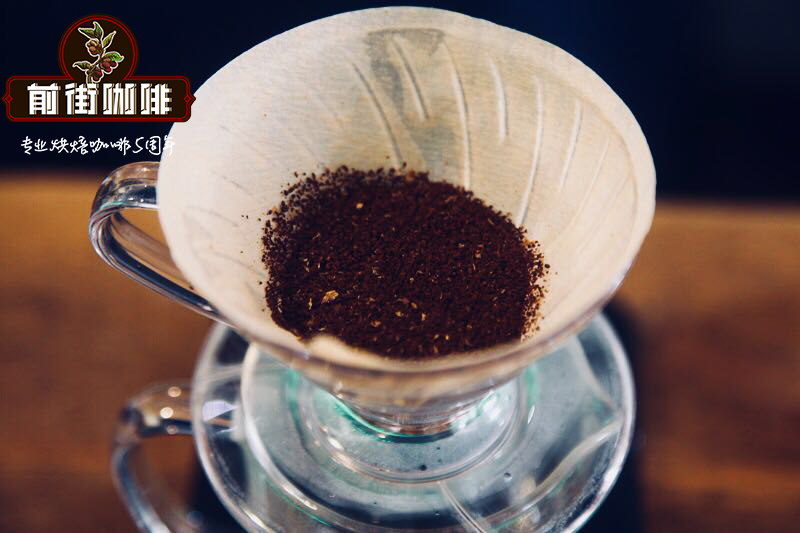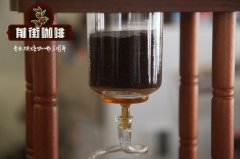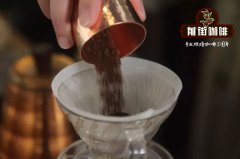How to make Ethiopian Sidamo coffee at 50 degrees? Deep baking Sidamo coffee brewing teaching

Professional coffee knowledge exchange more coffee bean information please follow the coffee workshop (Wechat official account cafe_style)
Producing areas:
Sidamo is located in southern Ethiopia, at an altitude of about 1800-1900 meters, on a hillside on the shoulder of the Great Rift Valley. Planted by more than 2000 small farmers' coffee farms, the area has an ideal annual rainfall of about 1800 to 2180ml.
Flavor:
Wild fruit flavor, bitter sweet chocolate and red wine similar to Yemeni mocha.
Features:
The raw beans of Sidamo coffee refined by washing are fully ripe coffee cherries picked from the original forest, washed to remove the pulp and peel, and dried in the way of an elevated bed. On the one hand, it can completely isolate the miscellaneous smell caused by contact with the soil, on the other hand, it can also improve the drying efficiency of coffee cherries, and more completely present the original fruit flavor of coffee.
How do you make deep-baked Ethiopian coffee?
When it comes to medium-and deep-roasted Ethiopian coffee beans, many people have this problem when brewing: the coffee tastes too bitter. Today, Qianjie baristas would like to share a little experience so that people can reduce mistakes when roasting beans in deep cooking and keep the taste of coffee within an acceptable range.
Medium and deep baked beans are generally caramel, cream, dark chocolate, baked nuts. And syrup-like taste and full sweetness, weak acidity can make the taste a little more interesting, but it is not the theme.
Because the fiber structure of medium and deep baked beans is relatively fragile, the substances in the beans are easily extracted, and there are more bitter substances. So to sum up, there are a few tips for making a good cup of medium-and deep-roasted coffee:
First, low (low temperature)
Medium-and deep-baked beans are recommended to be boiled at a water temperature of 83 to 86 degrees. Lowering the water temperature can slow down the extraction rate and reduce the extraction of bitter substances.
Second, soft (the current should be soft)
Gentle injection of water to reduce the impact of water on the powder bed. To control the height of the water level in the filter cup, slowly pour water at a lower height after steaming, and then let the coffee powder in the filter cup seem to be soaked. This can slow down the pace of extraction and easily produce coffee with a soft taste and a solid taste.
Third, slow (circle slowly)
Slowly pour water on the powder bed from the inside to the outside and then from the outside to the inland. Too fast a circle will increase the stirring effect of the water on the coffee, and it is easy to make the medium and deep roasted beans bitter. Try to reduce the stirring of the powder bed and try to extract the taste of coffee by soaking. This can effectively control bitterness and astringency.
Fourth, rough (rough grinding)
Rough grinding can reduce the contact area between coffee powder and water, so that coffee is not easy to bring out bitterness and astringency due to high temperature water at the beginning of brewing, combined with slow brewing, prolonging the extraction time, lowering the water temperature in the latter section, and then slowly bringing out the flavor and taste substances.
The above is my experience, through these four points to adjust the extraction method of medium-deep roasted beans, we can make the coffee less bitter.
END
Important Notice :
前街咖啡 FrontStreet Coffee has moved to new addredd:
FrontStreet Coffee Address: 315,Donghua East Road,GuangZhou
Tel:020 38364473
- Prev

18 production season Ethiopia rinses Yega Xuefei Lemon Flower G1 introduction _ how to drink Yega Sheffei Lemon
Professional coffee knowledge exchange more coffee bean information please follow the coffee workshop (Wechat official account cafe_style) Ethiopian Coffee-Yega Xuefei lemon flower is a stable quality, excellent flavor and cost-effective washed G1 Yega Xuefei, its raw bean defect rate is less than 1%, and the raw bean stage has a spice-like pretaste, its most acclaimed lemon, jasmine and honey
- Next

The Coffee Story of the Yega Snow processing Factory in Ethiopia _ introduction to the flavor of coffee beans
Professional coffee knowledge exchange more coffee bean information Please follow the coffee workshop (Wechat official account cafe_style) before we talk about the Ethiopian coffee processing plant Chelelektu, it seems that we have to talk about the Kochalay producing area (that is, Kochere, a common misinterpretation by domestic operators as Kochel). Kechalei producing area, under the ECX's production area classification system, is Ye Jiaxue.
Related
- Detailed explanation of Jadeite planting Land in Panamanian Jadeite Manor introduction to the grading system of Jadeite competitive bidding, Red bid, Green bid and Rose Summer
- Story of Coffee planting in Brenka region of Costa Rica Stonehenge Manor anaerobic heavy honey treatment of flavor mouth
- What's on the barrel of Blue Mountain Coffee beans?
- Can American coffee also pull flowers? How to use hot American style to pull out a good-looking pattern?
- Can you make a cold extract with coffee beans? What is the right proportion for cold-extracted coffee formula?
- Indonesian PWN Gold Mandrine Coffee Origin Features Flavor How to Chong? Mandolin coffee is American.
- A brief introduction to the flavor characteristics of Brazilian yellow bourbon coffee beans
- What is the effect of different water quality on the flavor of cold-extracted coffee? What kind of water is best for brewing coffee?
- Why do you think of Rose Summer whenever you mention Panamanian coffee?
- Introduction to the characteristics of authentic blue mountain coffee bean producing areas? What is the CIB Coffee Authority in Jamaica?

